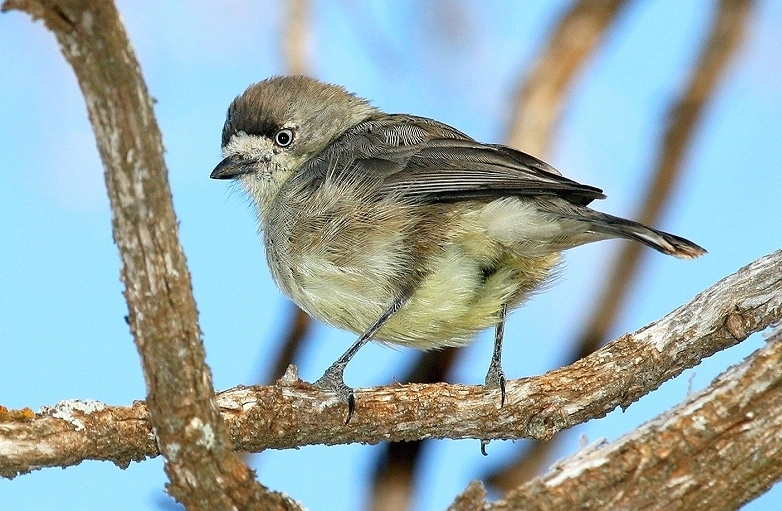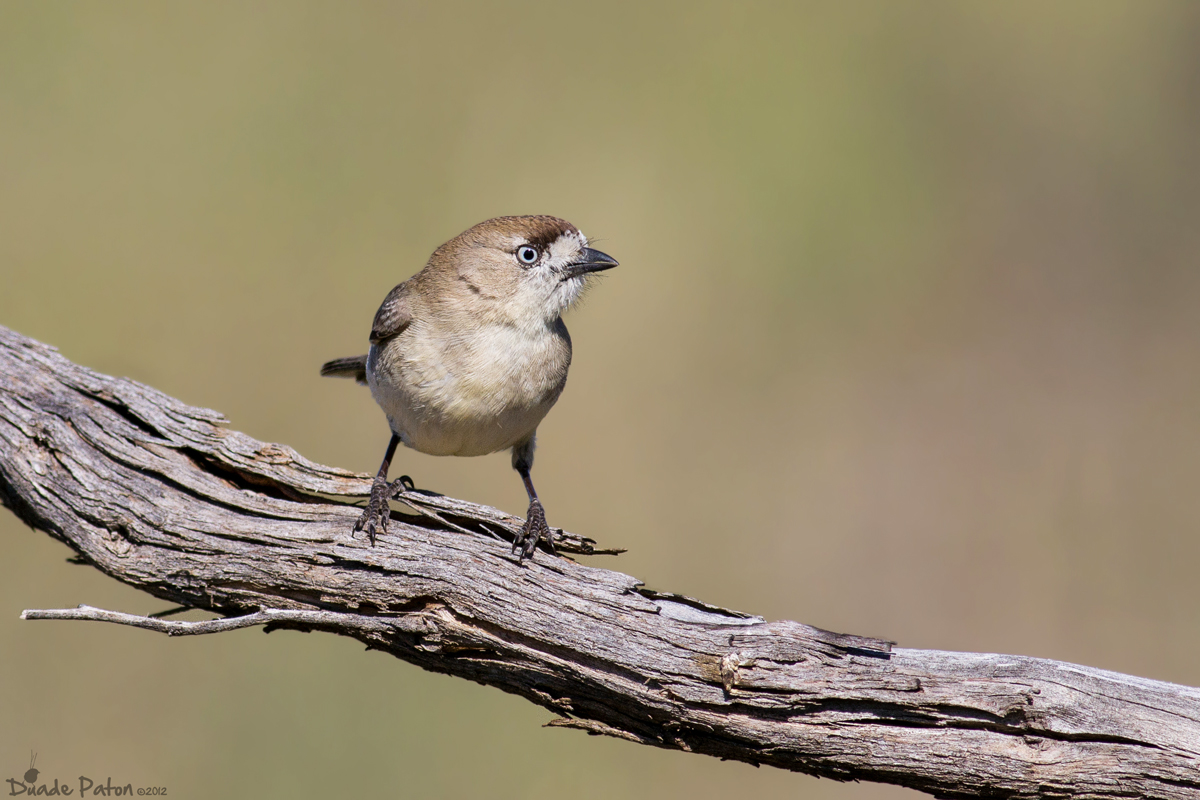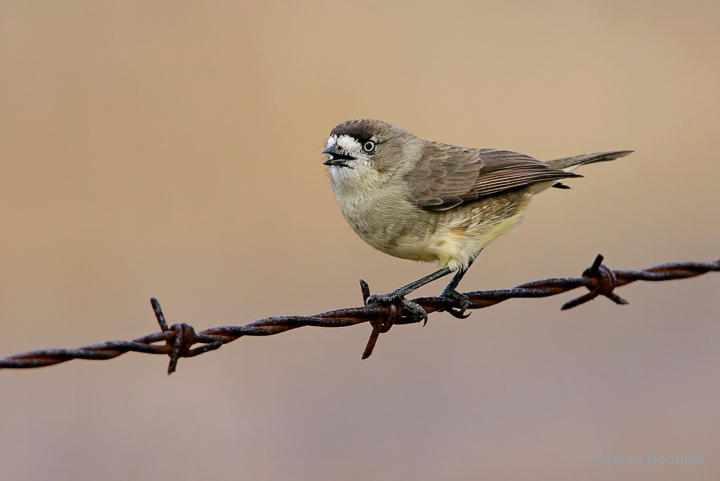
Aphelocephala leucopsis
SUBFAMILY
Acanthizinae
TAXONOMY
Xerophila leucopsis Gould, 1841, Adelaide, South Australia.
OTHER COMMON NAMES
English: Chestnut-bellied whiteface, white-faced titmouse,
eastern whiteface, tomtit; French: Gйrygone blanchвtre; German:
Fahlrьcken-Weisstirnchen; Spanish: Ratona Blanca.
PHYSICAL CHARACTERISTICS
4.5 in (11 cm); 0.4 oz (11 g). Gray-brown upperparts and
whitish underneath. Forehead is white with black edge extending
to eye. Dark tail tipped white. Stubby, finch-like bill.
DISTRIBUTION
Southern and central Australia, though generally avoiding
coastal areas.
HABITAT
Open eucalypt and acacia woodland, grassland and farmland
with scattered trees.
BEHAVIOR
Typically in small to sometimes large groups, often with
finches or small insectivores. Actively hops on ground, reminiscent
of a sparrow. Song consists of musical, bell-like notes and
twittering calls. Sedentary.
FEEDING ECOLOGY AND DIET
Mostly forages on the ground for small invertebrates and
seeds, but also takes insects from shrubs and bark of trees.
REPRODUCTIVE BIOLOGY
Breeds from June to November. Nests are typically in shrubs
or small trees but may be placed in hollows or even buildings.
Two to five dull white eggs, with sparse brown or red
speckles.
CONSERVATION STATUS
Not threatened.
SIGNIFICANCE TO HUMANS
Fairly familiar to many people in drier farming areas.
Other popular Animals
Photo Gallery of - Southern whiteface




 Animalia Life
Animalia Life